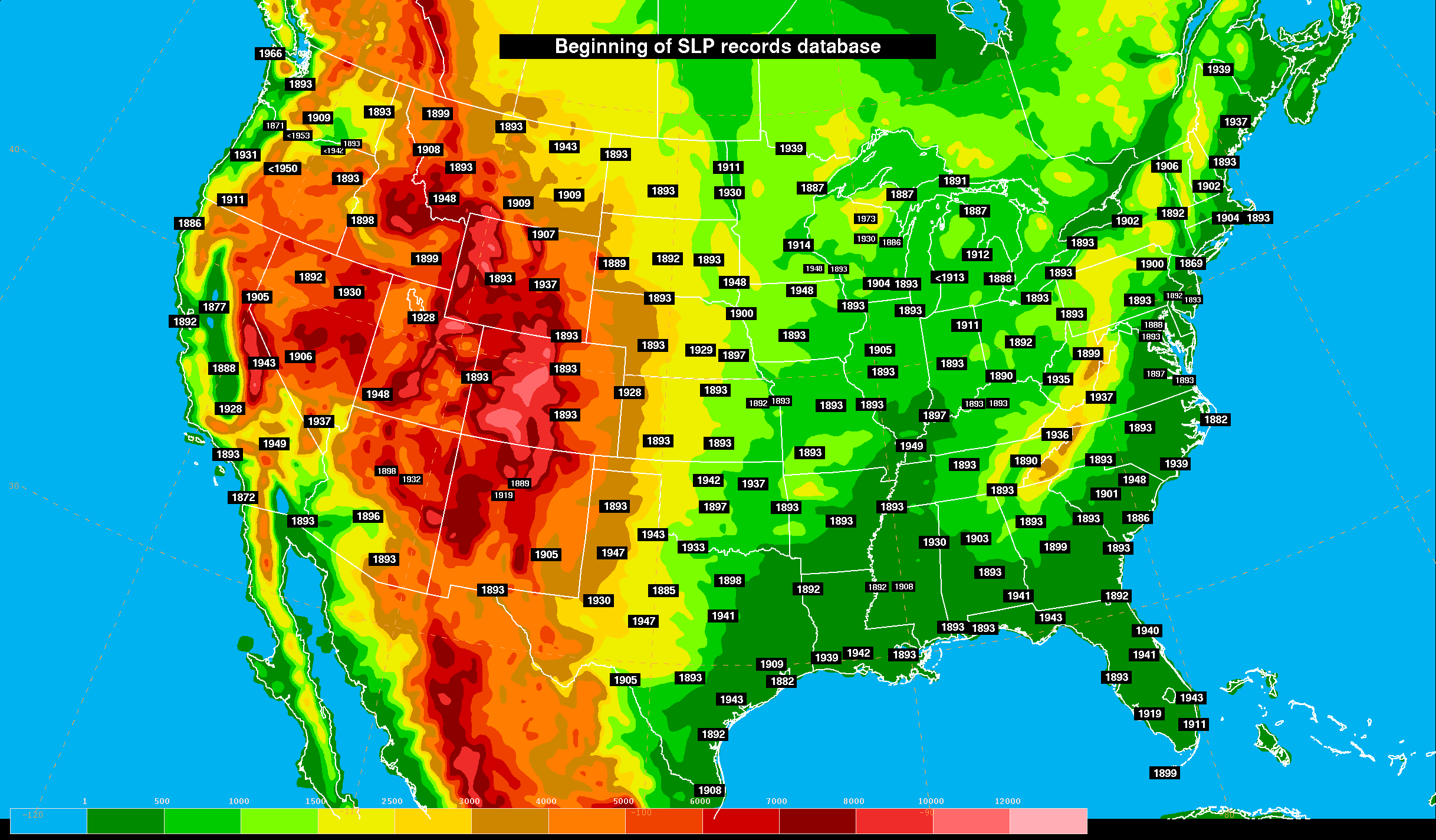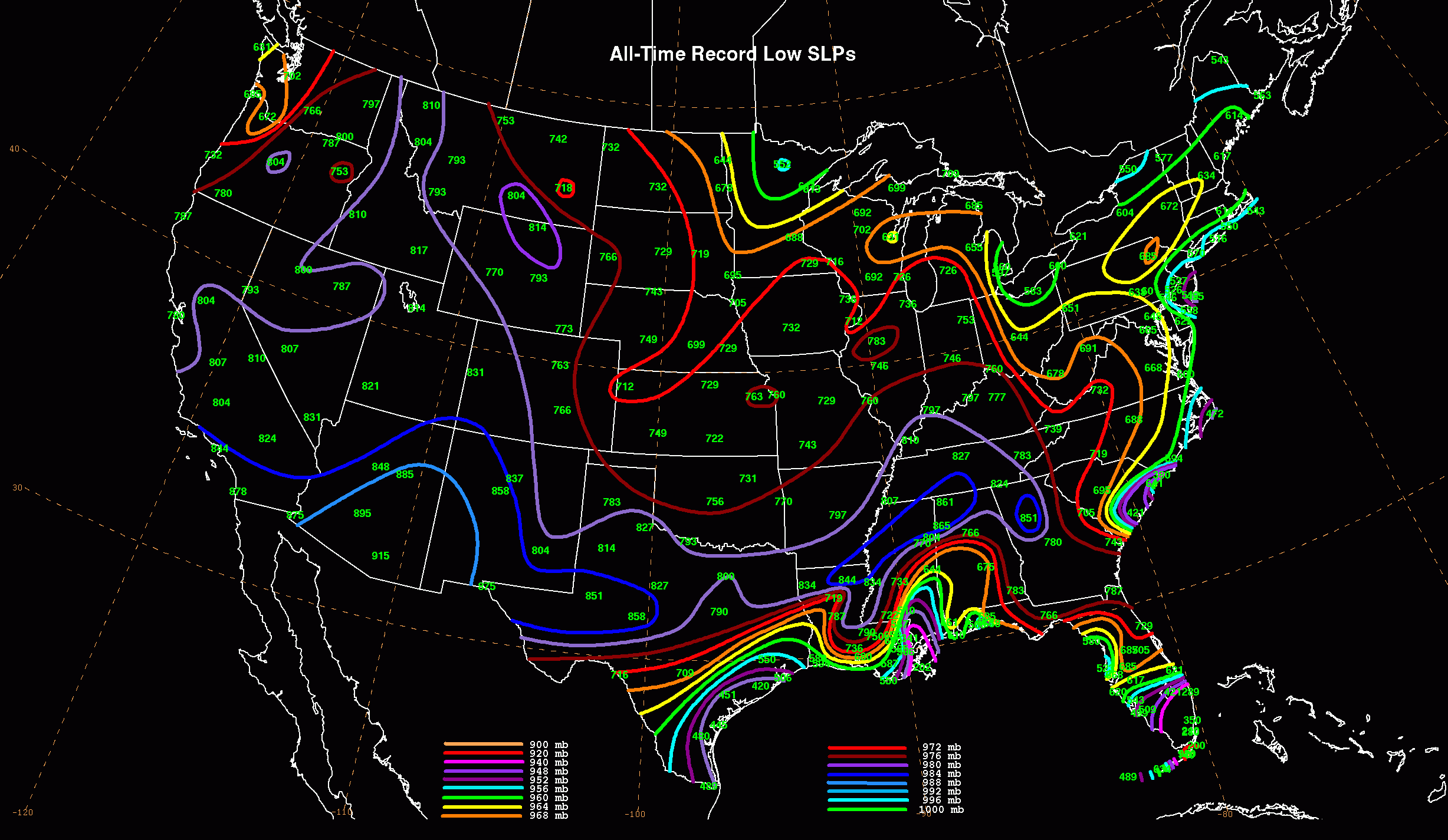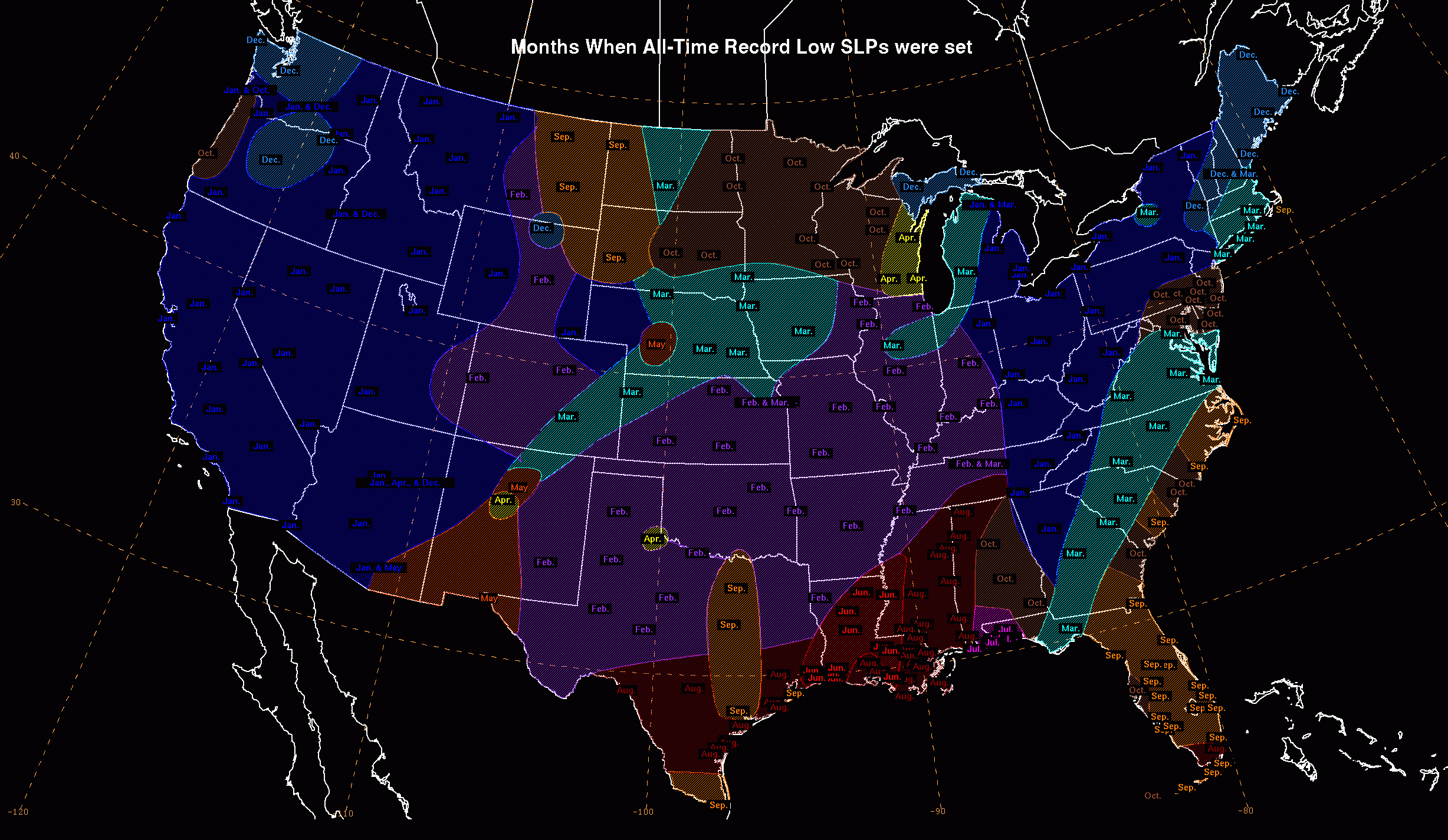|
Highest Sea Level Pressure on Record Set
at Grand Island, Nebraska |
On Wednesday, Jan. 7, 2015, The National Weather Service Weather Prediction Center (WPC) released information regarding a new all-time record high surface sea level pressure reading established at Grand Island, Nebraska. This occurred as a result of an unusually strong/cold Arctic high pressure system sinking southward out of Canada and across the Central Plains.
The sea level pressure measured by the ASOS at Central Nebraska Regional Airport at Grand Island reached 1056.9 millibars around mid-day on the 7th, breaking the previous high sea level pressure record of 1054.5 millibars set back on December 24, 1983.
The images below provide additional information regarding sea level pressure records across the nation, including information for LOW sea level pressure records! Speaking of which, the lowest pressure on record at Grand Island was 969.9 millibars back on March 26, 1950. Click on any image to enlarge.
So, what does this record really mean?...The term "sea level pressure" basically refers to the "weight" of the atmosphere pushing down on us at any given time. At home, some of us track atmospheric pressure with a barometer. When we look at weather maps on TV or on the Internet, we often see "H" to symbolize high pressure and and "L" to symbolize low pressure. In general, high pressure systems result in dry, clear weather (and often very cold temperatures in the winter), while low pressure systems often bring cloudy skies and precipitation. In addition, the strength of the wind is largely driven by the difference in pressure across an area (known as the "pressure gradient"). In other words, the greater the change in pressure across a given area, the stronger the wind blows across that area. Wind blows clockwise around high pressure system, and counter-clockwise around low pressure systems. For further explanation of atmospheric pressure and how it creates wind, including some basic graphics, please check out this link: https://www.srh.weather.gov/jetstream/synoptic/wind.htm |
 |
| Surface Analysis at 12 p.m. CST on January 7th, depicting the record-setting high pressure over the central U.S. |
 |
| Start Date of Sea Level Pressure Record Database |
 |
 |
| All Time Record HIGH Sea Level Pressure Values (in mb) |
Month When HIGH Sea Level Pressure Record Was Set |
 |
 |
| Date/Year of December HIGH Sea Level Pressure Record |
Date/Year of January HIGH Sea Level Pressure Record |
 |
 |
| All Time Record LOW Sea Level Pressure Values (in mb) |
Month When LOW Sea Level Pressure Record Was Set |
 |
 |
| Date/Year of February LOW Sea Level Pressure Record |
Date/Year of March LOW Sea Level Pressure Record |
 |
This page was composed by the staff at the National Weather Service in Hastings, Nebraska. |
 |
|